
November 1-7 live war map: Ukrainian Armed Forces expand their attacks into Russian-held areas and plan something unexpected in Kherson region
The Russians are not only attacking across the entire front in Donetsk and Luhansk regions, but they're also pushing back on the southern front in Zaporizhzhia and Donetsk regions. However, they are struggling to make any progress in the Kherson region
Commander-in-Chief Zaluzhnyi's announcement about the shift to a more static positional type of warfare worried many Ukrainians because it meant that hopes of a quick counteroffensive and the liberation of occupied territories were fading. If we look at the broader picture of territorial changes this year, we can see that the Russians gained about 13-15 kilometers in the Bakhmut area, while the Ukrainian military recaptured around 10 kilometers in two areas on the southern front. This suggests that a more static style of warfare has been ongoing in Ukraine throughout the year.
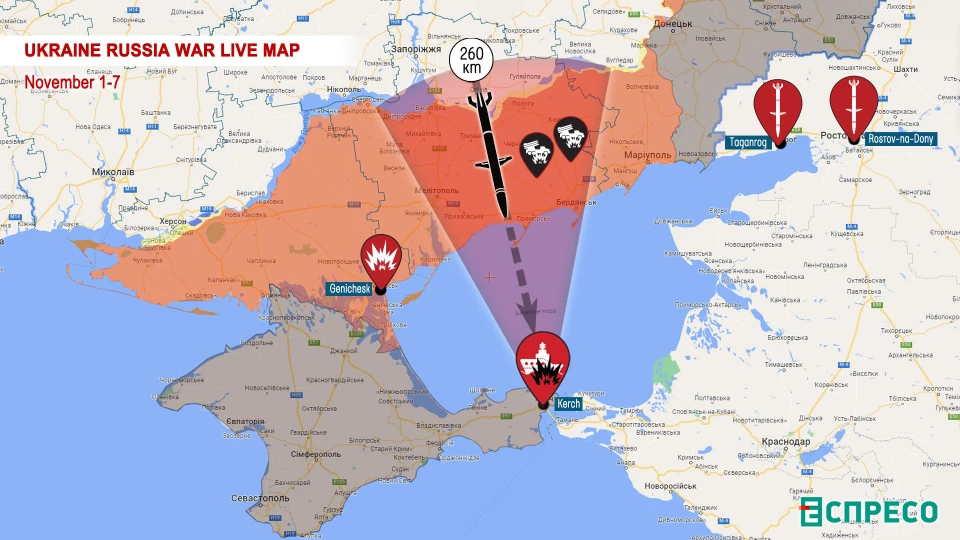
War with Russia: Strikes on Crimea and Russian Federation
For the first time since the start of the full-scale war, the Ukrainian Armed Forces launched an attack on Kerch, where they destroyed a modern Russian ship called Askold, which was being worked on in the Zaliv Shipyard. Several SCALP cruise missiles hit the ship, which was one of the most advanced in the Russian fleet. It had the ability to launch 8 Kalibr missiles and was equipped to launch a Zircon nuclear missile. The ship was undergoing upgrades and was almost ready for action. This missile strike showed that the Ukrainian Armed Forces have new abilities to hit targets in the easternmost part of Crimea, close to the Crimean bridge. This is currently the farthest our cruise missiles have reached, and it was made possible by finding a gap in Russian air defense. Specifically, two S-300 systems were destroyed in early November, one in the Polohy district and one near Berdyansk.
Furthermore, Ukrainian soldiers continued to target Russian helicopters by launching missile attacks on airfields in Taganrog and Rostov-on-Don. At least 8 explosions were heard in those areas.
On November 1, the Ukrainian Armed Forces destroyed the combat control center of the Dnepr military group of the Russian Federation. It is responsible for the fighting in southern Ukraine in the Kherson region. The center was located in boarding houses on Arbat Spit near Henichesk.
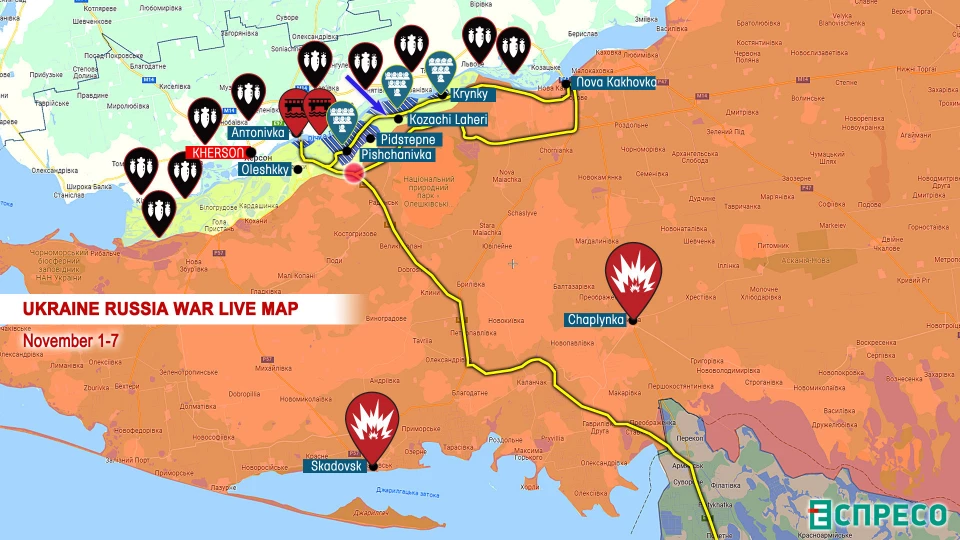
Map of Ukraine's unusual counteroffensive in Kherson region
Over the past week, Ukraine's military expanded its influence on the left bank of the Kherson region. Specifically, they attempted to enlarge and connect two strategic positions: one in the Krynky area and the other near Pishchanivka and Pidstepne. This move created panic among Russian forces, who feared an attack on Kozachi Laheri. While there were indeed skirmishes in this area, it's premature to declare the complete liberation of another village. Additionally, our Special Operations Forces extended their control southward, overseeing key road intersections leading to Oleshky from Nova Kakhovka and Crimea.
Several signs indicate the reinforcement of Ukrainian forces, including the deployment of Humvee and BTR-4 Bucephalus on the left bank of the Dnipro River. There are even reports of at least one tank being used against the invaders.
Simultaneously, Ukrainian forces struck two Russian command centers in Chaplynka and Skadovsk. It's unclear if Russian General Teplinsky, the recently appointed front commander, was present at either location, as there is no information regarding his elimination.
On November 6, Russian forces launched their largest aerial bombing campaign to date, dropping 87 bombs over the Kherson region.
Meanwhile, in the occupied territory, the enemy has begun mining energy infrastructure facilities. This action suggests the Russians may doubt their ability to maintain control over the occupied areas for an extended period.
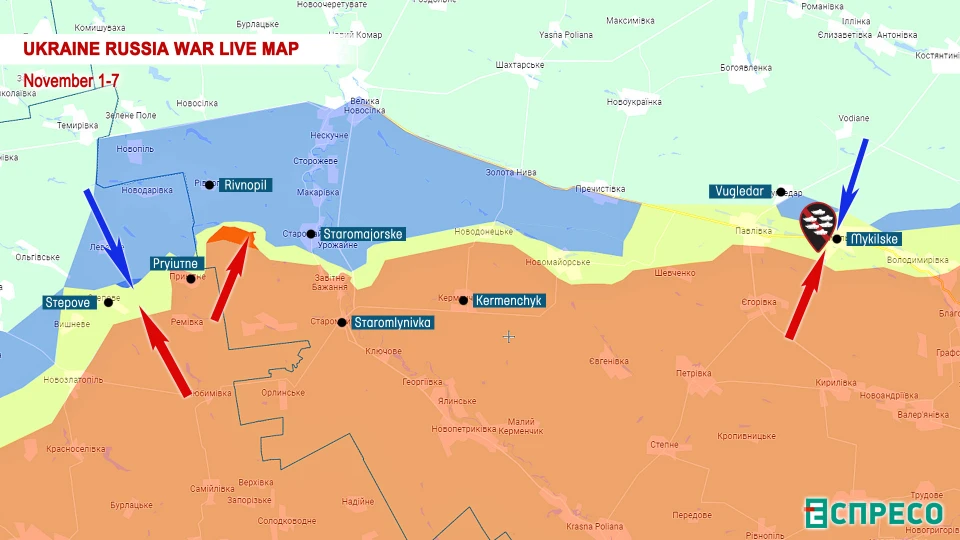
Southern front latest updates: Russian army goes on the attack
Amid ongoing heavy battles around the Tokmak region, the invaders launched a series of attacks in the Berdyansk area. Specifically, they made progress of about 1.5 kilometers northeast between Priyutne and Staromayorske villages, capturing several positions. On the other hand, their attempt to advance towards Rivnopil resulted in the Ukrainian Armed Forces gaining 500 meters of ground.
In another unsuccessful attack on November 2, the Russian forces targeted the Mykilske area with an assault towards Vuhledar. This led to the Ukrainian Armed Forces destroying a column of at least 18 tanks and armored vehicles operated by the Russian forces.
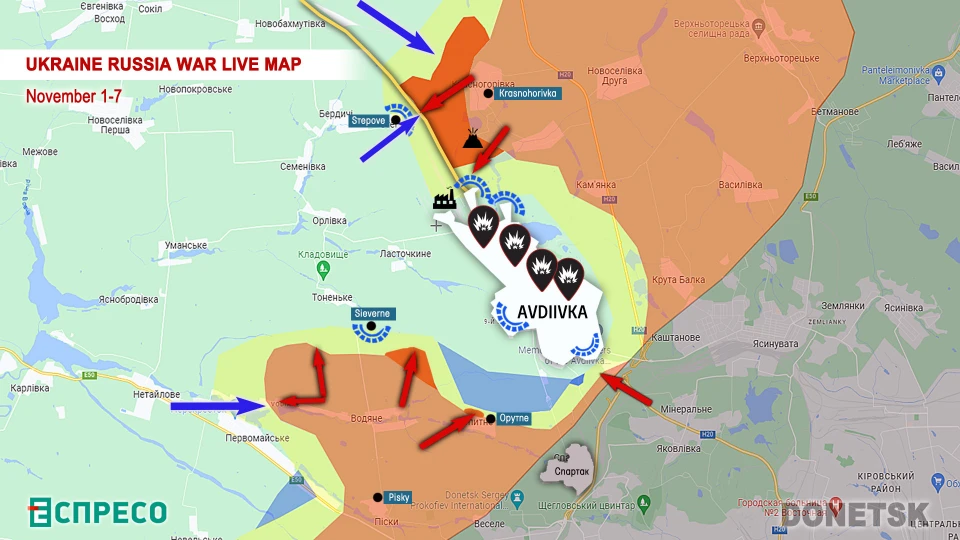
Avdiivka fortress stands strong
The main thrust of the offensive aimed to cross the railway line towards Stepne village and encircle the city. The aggressors even dug a 160-meter tunnel beneath the railway, but their success was short-lived. Within a day, the Defense Forces pushed the enemy back to the east of the railway. Additionally, the Ukrainian Armed Forces launched a local counteroffensive on the northern front, limiting Russian advances to the north.
In the southern part of the city, the invaders made some progress towards Sievierne village and temporarily held off the Ukrainian Armed Forces on the outskirts of Opytne, a place our troops had retaken earlier this year.
Although the spoil heap is still in the hands of the Russian Armed Forces, a large number of videos show that the invaders demobilized (eliminated - ed.) by Ukrainian artillery are exercising control on top of it.
In Donetsk, explosions were reported, targeting the drone operator training center and the creators of information attacks.
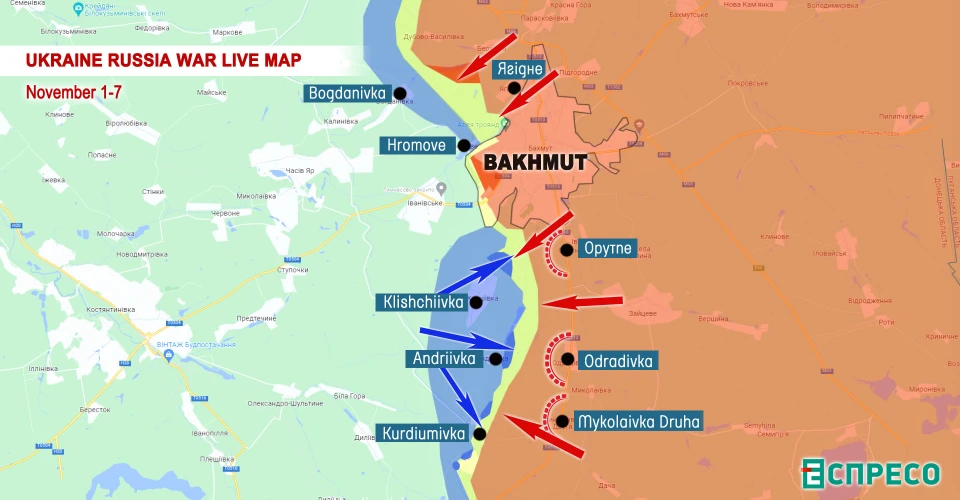
Map of current conflict in Bakhmut
To the north of the occupied city, Russian forces continued their offensive near the Berkhivka Reservoir. Ukrainian defenders repelled a significant landing to the south of the reservoir and swiftly pushed back their advance into the adjacent forest. Meanwhile, Russian forces attempted to progress towards Khromove.
In the south of the city, Ukrainian Armed Forces maintained their offensive in Kurdyumivka and achieved some success north of Klishchiivka, where the Russian Armed Forces made persistent counterattacks.
- News















































